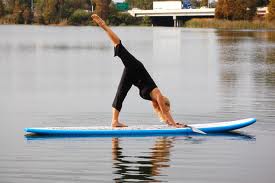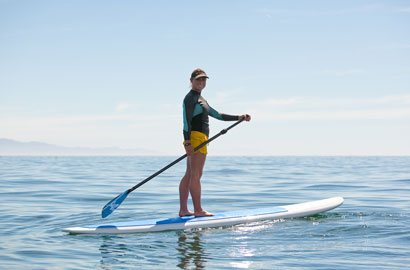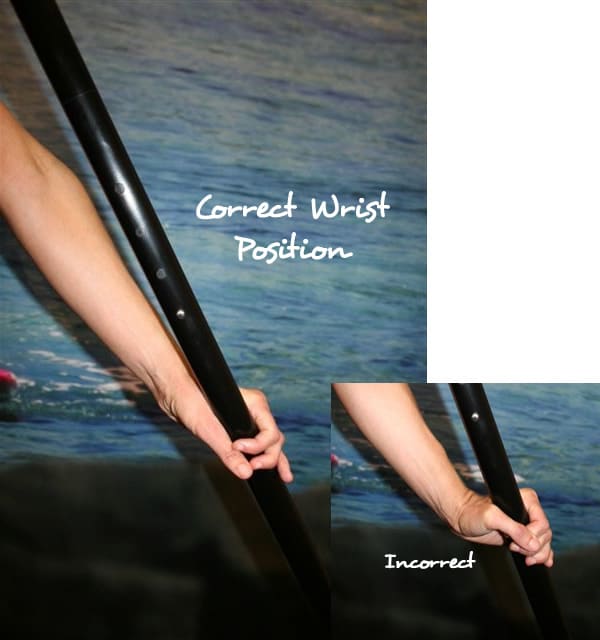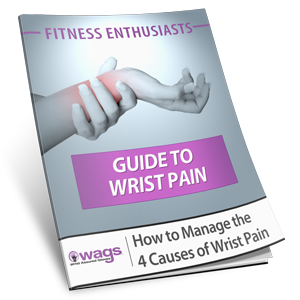
What is SUP? Stand Up Paddle boarding—that’s what.
On a recent camping trip my sons and I decided to try out Stand Up Paddleboarding, so we kayaked over to Jack’s boat rentals to get started. After a few quick tips we shoved off into the pond. The boys were a natural at –balancing and paddling with ease. Soon they even began trying some tricks like jumping up, and landing a 180 spin. I choose to keep my feet firmly planted on the board and still found it fun and as promised… an overall body workout.
This fast growing sport of stand up paddleboarding (SUP) is an enjoyable way to play on the water while working on both balance and muscle toning. It’s quickly becoming a favorite cross training work-out and without the requirement of waves, you can take your paddleboard on various waterways – rivers, oceans or lakes. Also, unlike surfing it’s easy to learn the technique in no time at all. The equipment requirements are just a long handled paddle and a paddle board which is similar to a surf board.
The Stance
You stand upright on the paddleboard with your feet parallel and hip-width apart. Some people also feel more comfortable kneeling on the board to begin, instead of standing. Don’t stand on the rails or boards edges. Keep your feet forward, knees bent, back straight, shoulders steady then balance and shift your weight with your hips. Keep your eyes forward to enjoy the scenery instead of gazing down at your feet. Once you start paddling you’ll find, just like that first time you rode a bike, your stability improves as your speed increases.
Paddle Grasp
Proper grasp is important to maximize the power of your stroke and minimize the stress on your wrists. One hand is on top of the T-grip while the other is on the paddle shaft. Which hand is on top depends upon which side you’re paddling on. When paddling on the right side your left is on top while the right hand is on the shaft. Reverse your hold for paddling on the left side of the board. The curve or angled “elbow” of the paddle faces away from you.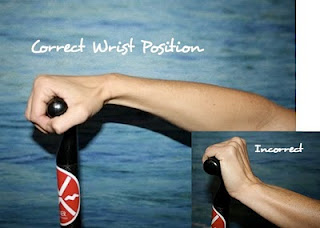
Top Hand: Keep a neutral or straight wrist instead extending it back. Unlike kayaking where you move your wrist in flexion and extension, in SUP you want to avoid wrist movement to have more power in your strokes. Keeping a neutral, stable wrist will also minimize repetitive movements which could lead to tendonitis. Keep a relaxed grip and straight wrist with the top hand.
Bottom Hand: The bottom hand is on the paddle shaft and again it’s best to keep a neutral wrist position. First grasp the shaft with your index finger and thumb then close the other fingers around the shaft in a loose grasp with the wrist fairly straight. The bottom hand serves to mainly place and guide the paddle in the water not to pull the paddle forcefully through the water.
Get Paddling
Here’s where the core workout comes in —Keep your arms straight and twist from your torso. When you bend your elbows you’ll use your arm muscles more than your core, so use your stronger abs rather than your arms. Push the paddle grip down with your top hand to push the blade under the water surface then pull it back to about your ankles then lift up and out. You can keep your strokes short and easy as you learn. To move forward paddle about 4 times on one side then switch to the other side changing your hand positions.
So get out on the water and give yourself a dose of nature while working on your core stability, upper body strength and balance. Once you master the basic technique, who knows what’s next. Paddleboard yoga anyone? We carry a large selection of WAGs non slip yoga gloves, and other workout gloves with wrist support perfect for SUP!